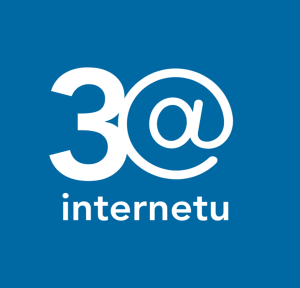30 years online!
In February 13th, 1992, our country joined the Internet. We celebrated the anniversary at a conference. Famous Vint Cerf also sent his greetings.
On Sunday, February 13th, it was thirty years since the Czech Republic, then still part of the Czech and Slovak Federative Republic, officially joined the Internet. Czechoslovakia became the 39th connected country, with only Hungary and Poland among the former Eastern Bloc countries narrowly overtook us. The first connection had a speed of 19.2 kb/s and led to the EARN node at the University of Linz, Austria. The first connected device was a large IBM 4341 mainframe computer, which weighed several tons and occupied practically one whole room in the Regional Computer Centre of Universities, which was part of the Czech Technical University in Prague.
The historic event was commemorated by the participants of a day-long conference held by the CESNET association in cooperation with the CZ.NIC and NIX.CZ associations on the occasion of the thirtieth anniversary, in the same place where the official act of the first connection took place, i.e. in lecture room number 256 in the building of the Faculty of Mechanical Engineering of the CTU in Dejvice, Prague.
The participants were first greeted remotely by one of the creators of the network, Vint Cerf, who is referred to as the “father of the Internet”. This was followed by presentations by a number of leading experts, including a number of memorial speakers. Among them was Jan Gruntorád, Director Emeritus of CESNET, who headed the small team that initiated the connection of our country.
“Dear colleagues, I would like to invite you to the official launch of the INTERNET computer network in the Czechoslovak Republic, which will take place on Thursday February 13th, 1992 at 9.30 a.m.” These words were used by Jan Gruntorád, then Head of the Information Systems Department of the Regional Computer Centre of Universities, to introduce the invitation addressed to several dozen experts. Basically, he addressed everyone who had an idea of what the Internet actually was. From the perspective of the majority of society, this was an insignificant event that was not covered by any media. Not a single video or audio recording of the event has survived. Few of those invited had any idea that they were witnessing a turning point that would trigger a fundamental transformation of the whole society.
At that time, the Internet was only accessible to selected institutions. Connection required approval from the US grant agency National Science Foundation (NSF), which operated and fully funded the only Internet backbone at the time. One of the conditions was that the connection was to be used for academic purposes only; commercial traffic was not allowed. NSF representative Steven Goldstein was present at the first official connection.
“In 1992, we assumed that the Internet would only be used in higher education. Nobody thought about mass expansion to its present form. If someone had predicted then that in thirty years almost everyone in our country would have access to the Internet and that we would be able to connect to it anywhere on the street using mobile devices that fit in a trouser pocket, we would have considered them a dreamer. I think the rapid development of the Internet surprised everyone,” says Jan Gruntorád today.
Today, more than half of the human population, over four billion people, have access to the Internet. In the Czech Republic, 83% of households are connected to the Internet, and over six million people use mobile Internet, according to a November survey by the Czech Statistical Office. The register of national domains, managed by the CZ.NIC association, contains approximately 1.4 million entries. The average speed at which domestic families connect ranges from 25 to 50 Mb/s, depending on the technology chosen. Compared to the speed of the first connection (19.2 kb/s), we are a thousand times higher. The most advanced infrastructures offer even higher speeds. For example, the backbone of the CESNET scientific research network reaches 100 Gb/s, here we are talking about 10 million times higher capacity. And CESNET is already preparing its network for 400 Gb/s.
While in the first years of the Internet, the efforts of the professional community were focused mainly on technological development, i.e. on building the necessary infrastructure and developing new devices, more recently issues related to the openness of the network and its freedom have become more and more important. Vint Cerf also addressed this topic in a pre-recorded greeting, which was viewed by visitors to the conference.
“Currently, we see many harmful things that can happen in this online environment, and the steps that some governments would like to take to respond to that. Their motivations may be understandable, but their technics may not necessarily produce a result that we all would like. So our challenge today is to figure out how to protect the freedoms and utility and openness of the Internet and at the same time dealing with the fact that there are people who hurt others through that medium, often across international boundaries. So how do we defend our citizens, keep them safe and keep them able to use the network, while at the same time keeping the openness which is so vital to innovation and sharing of scientific knowledge, “said Vint Cerf, who now serves as Vice President and Chief Internet Evangelist of Google.
